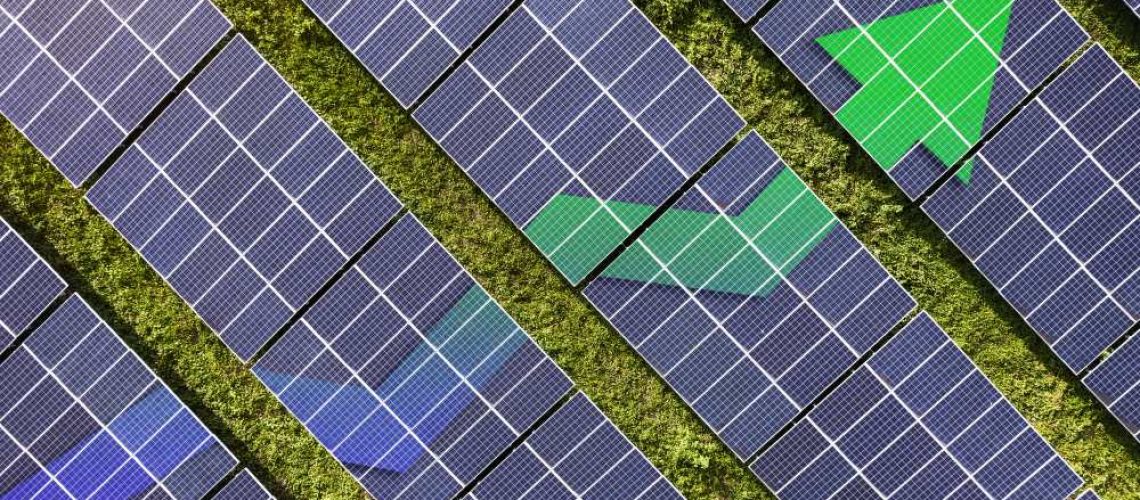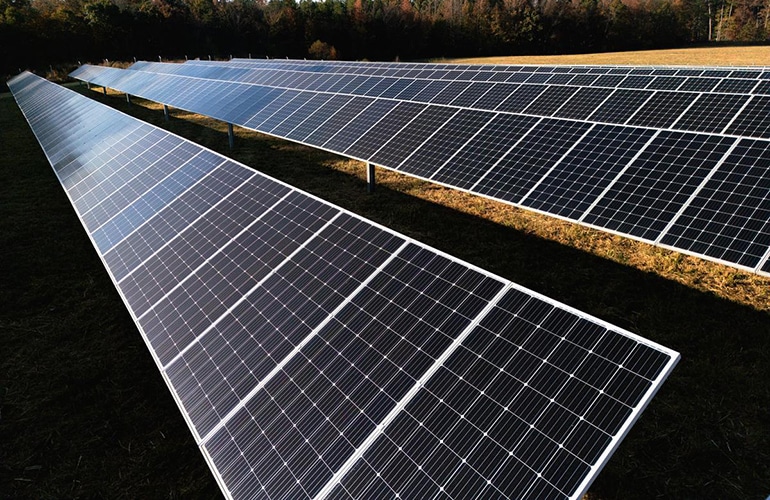By Hisham Gouda | SAP
The world reached an important energy milestone — and, perhaps, a critical tipping point — in 2023, when for the first time ever, combined investment in renewable power and grids overtook global spending on fossil fuels, according to a June 2024 report from the International Energy Agency.
That shift is expected to accelerate in 2024, with roughly $2 trillion set to go toward clean technologies, including renewables. Meanwhile, the IEA expects investment in solar PV will surpass spending on all other electricity generation technologies combined in 2024, reaching $500 billion. The growing investment in solar and other renewables dials up the pressure on developers and contractors to bring large-scale infrastructure projects online faster and more efficiently.
With the rise of artificial intelligence and data-driven constructs like digital twins, the tools are now at hand to help solar infrastructure developers and contractors speed their projects to the finish line to keep pace with the world’s growing appetite for (and investment in) renewables.
One such set of intelligent tools can be found in what’s called an ontology management system (OMS), which uses AI to harmonize, analyze and draw insight from various types and sources of information so stakeholders can readily visualize how assets, systems and processes that comprise a solar infrastructure project will work individually and together, and how they can be optimally managed throughout their lifecycle.
What is an ontology management system, exactly?
Ontology, by definition, is a set of concepts and categories in a subject area or domain that shows their properties and the relations between them. For the purposes of a solar infrastructure project (or really any kind of complex industrial project), an OMS provides a structured, holistic view of all project components and their interrelationships, storing and analyzing data about them across their entire lifecycle.
Such a system enables creation of digital twins, a virtual representation of a physical asset or system that applies intelligent modeling and visualization capabilities to data to simulate, analyze, and optimize the performance of specific components like solar panels and inverters, as well as an entire solar farm.
Digital twins use data collected from connected components equipped with sensors and IoT devices, and from other sources, to run scenarios, predict outcomes, and optimize design and operation. They can be integrated with control systems to monitor performance and make real-time adjustments, and with predictive analytics tools to forecast maintenance needs and potential failures.
These digital twins draw data from digital threads, which carry definitive, comprehensive information about an individual product or system. Digital threads function as the circulatory system for a digital twin, with data as its lifeblood. All historical data about a product or system resides in the digital thread, for use as a single source of truth in the construction, operation and maintenance phases of a project.
How an ontology management system impacts a project
Being able to visualize and predict the performance of a solar infrastructure project and its constituent components individually and as a whole not only reduces uncertainty and risk, it also enables a project to come together quicker and more cost-effectively to deliver more value to developers, builders, and other stakeholders through timelier, on-point decision-making, more efficient project execution, enhanced performance monitoring, greater reliability, and better performance from a sustainability standpoint, all of which leads to higher returns on investment.
Let’s take a closer look at how an OMS system works, and the specific areas where it can positively impact a solar project:
In project planning and design, visualization tools enable developers to see relationships and dependencies between various project components such as solar panels, inverters, mounting systems, and electrical infrastructure. They also can help with site analysis, with digital twins simulating the impact of varying sunlight conditions and weather patterns on energy production, guiding the placement of solar panels and infrastructure.
On the resource management front, an OMS can develop detailed inventory and logistics requirements for materials, spare parts, equipment, tools, and labor, aligning them with project phases to keep projects on schedule, and to reduce waste and cost.
As heavily as regulatory requirements figure into solar projects, OMS can simplify compliance responsibilities for stakeholders, feeding them up-to-date information on applicable standards and requirements, and using visualization to identify non-compliant areas. Detailed records of all actions and decisions, along with sustainability-related data, are maintained within the digital thread, so the system can easily identify, collect and organize the documentation required for regulatory approvals, audits and sustainability reporting.
During construction, a project’s progress can be tracked in real time with the OMS,so timely adjustments can be made and quality or safety issues can be identified and addressed sooner rather than later. The system can also predict potential delays or disruptions to inform contingency plans.
An OMS can also provide valuable financial insights about a project as it unfolds, tracking project costs and financial performance to help firms manage budgets and control costs. What’s more, it can accurately predict future energy production and revenue to support financial planning and decision-making.
Communication among teams and stakeholders is another area where OMS delivers benefits, with reporting and dashboard tools that enable parties to view the latest information about project status and other key performance indicators. Having fresh, clear and trustworthy project data at hand keeps project teams and stakeholders on the same page and encourages collaboration.
Ontology management systems can also help with system integration to ensure data interoperability, standardizing data parameters across geographic information systems (GIS), project management tools, performance monitoring, and other systems so they can exchange data seamlessly. This data supports visualization tools that help predict potential asset failures or maintenance needs, for example.
In a similar vein, digital twins within the OMS can pull real-time data from equipment-based sensors to continuously monitor a system’s performance, detect and address anomalies or inefficiencies before they escalate, and optimize maintenance schedules.
All these capabilities converge to give companies the means to better manage a solar project and the assets that comprise it over its entire lifecycle. To harness the power of an OMS, however, developers and contractors first have to ensure they put a solid foundation in place. That includes accurate, comprehensive, standardized, and fresh data, gathered from internal and external sources and stored securely in a system that can manage massive amounts of information.
Seamless integration between the OMS and other tools and platforms used in a project is also critical. Personnel with expertise in ontology, data science, and digital system engineering are also a must. Project stakeholders must be willing and able to share data.
With as much as 1,745 GW of new solar capacity potentially in the pipeline, according to a recent estimate by Global Energy Monitor, embracing a new generation of intelligent digital tools will put solar infrastructure developers and contractors in a strong position to deliver projects faster and more profitably to keep pace with the world’s rapidly growing appetite for renewable energy.
With nearly 35 years of industry experience, Hisham Gouda is a seasoned professional in the oil and gas, energy, utilities, engineering, and construction sectors. In 1998, he joined SAP as a senior solution manager in the engineering and construction industry business unit. His expertise and leadership skills led him to the utility industry business unit in 2004, where he led the solution management team in the Americas. In 2013, Hisham transitioned to the MENA region, taking on the role of chief solution expert in the oil and gas business unit. Hisham holds a Bachelor’s Degree in Mechanical Engineering and a Master’s in Mechanical & Aerospace Engineering from the University of Virginia.
Tags: artificial intelligence, utility-scale






